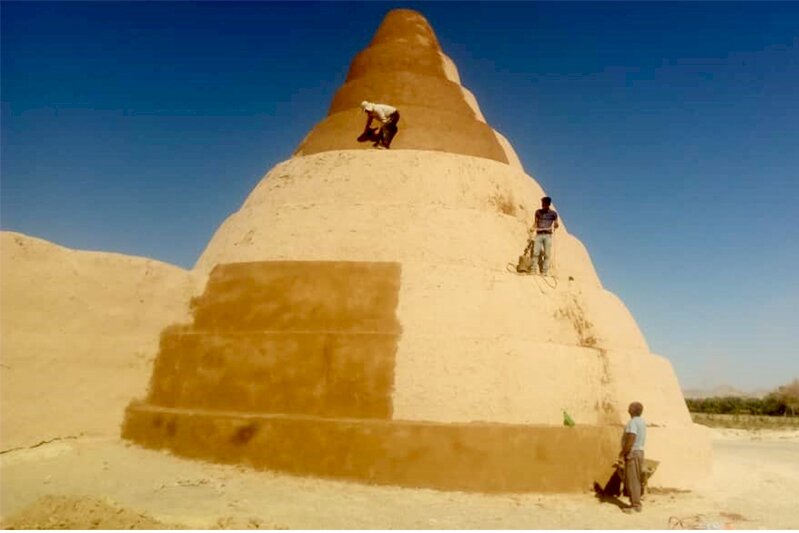Historical ice storage in central Iran undergoes restoration

TEHRAN – A Qajar-era (1789–1925) conical mud-brick adobe traditional Yakhchal (ice storage) has undergone some rehabilitation works in the village of Hek, near the ancient town of Abarkooh, Yazd province, central Iran.
The restoration project involved covering and strengthening walls using cob material as well as replacing worn-out construction materials, Abarkooh tourism chief Hamid Moshtaqian announced on Friday, CHTN reported.
When there was no electricity, no refrigerators, and no appliances, people kept a huge amount of water next to the high walls of Yakhchal, which cast a shadow that kept the water cool.
The water turned into ice during the wintertime. Then people cut the ice into many portable parts and put them in the ice house and covered the surface of the ice with special local grass.
This structure is built high to minimize the contact of warm air with the ice surface as the warm air floats upwards. The feature of the ice storage was essential to its functioning.
There were also wells behind the ice storages with a connective canal at the bottom of the ice storage to the wells with a slight slope.
When people piled up the ice, a little amount of water remained under the heap of ice. If the water was not removed it would make the rest of the ice melt. By channeling the water into the well, not only did they prevent the ice stored in the ice house from melting, but also they had cold and tasty water during summer months when the weather went up to 40 degrees Celsius.
The historical structure added to the National Heritage list in 2002.
ABU/MG
Leave a Comment